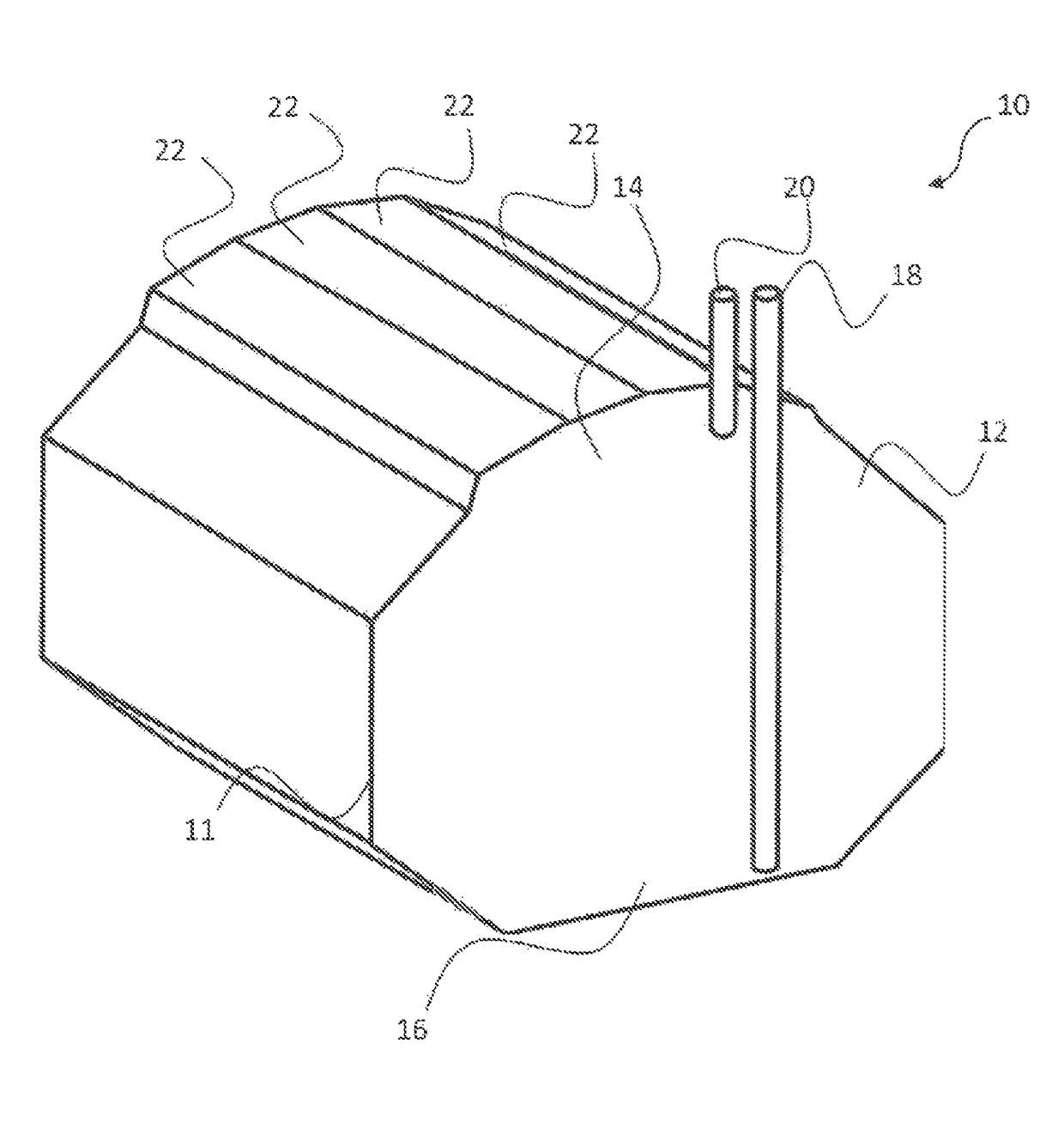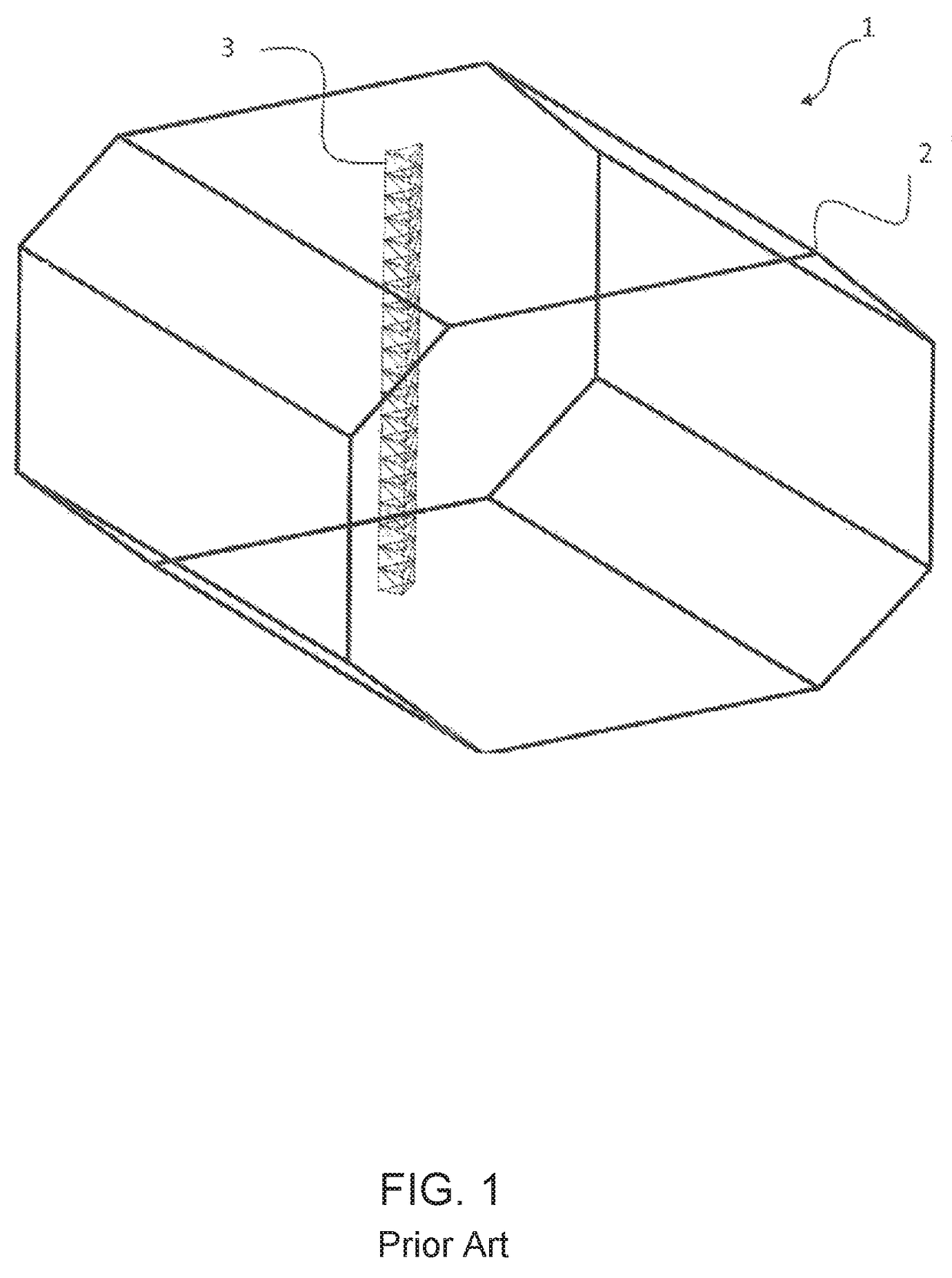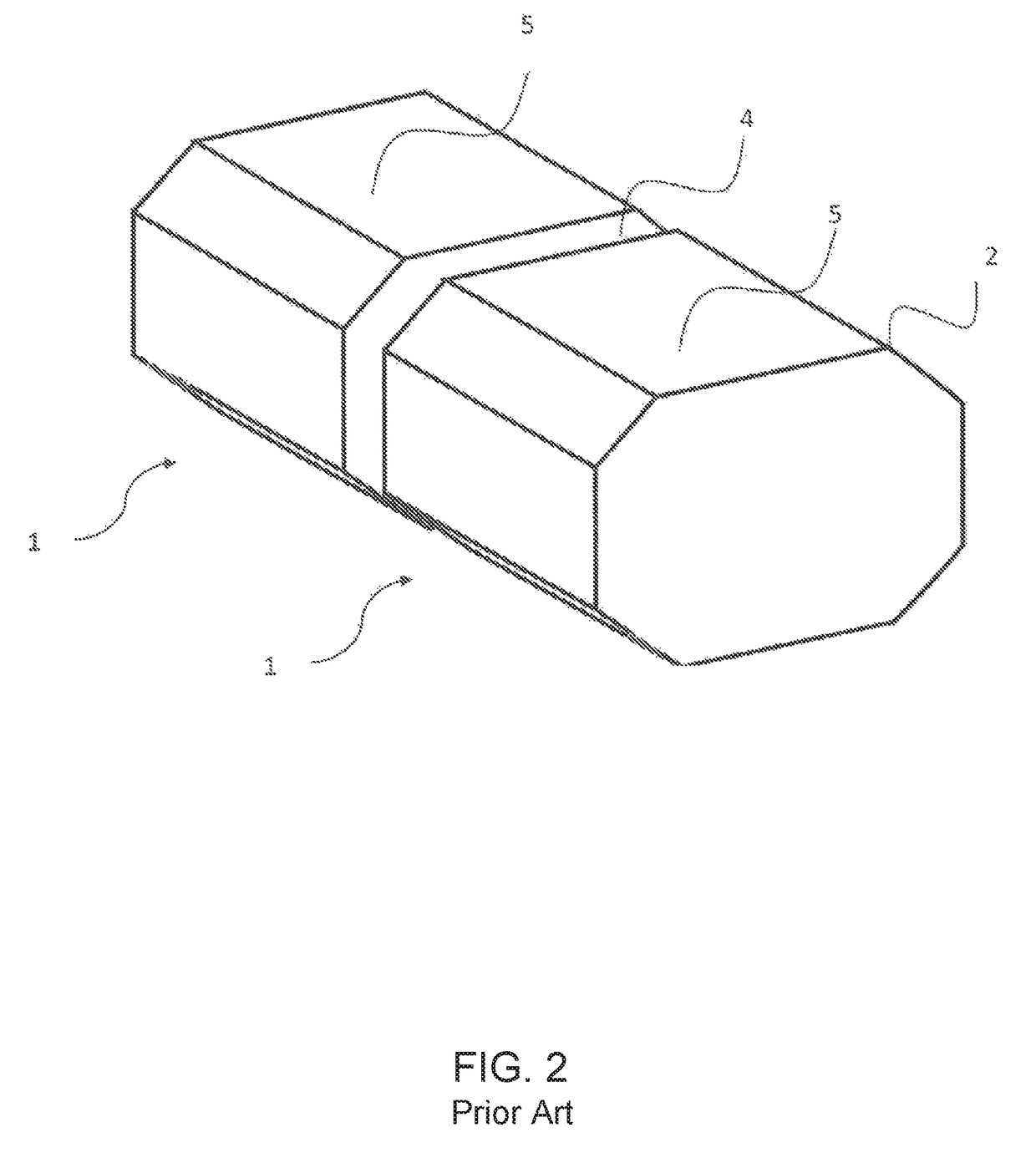Tank
a tank system and tank body technology, applied in the field of tanks or tanks, can solve the problems of low pressurization possible on the tank, partial load, inadmissible, etc., and achieve the effect of improving the insulation effect, increasing the vehicle load, and positive effect on the heat penetration into the tank
- Summary
- Abstract
- Description
- Claims
- Application Information
AI Technical Summary
Benefits of technology
Problems solved by technology
Method used
Image
Examples
Embodiment Construction
[0043]FIG. 4 illustrates a tank or tank system 10 with a prismatic shape 11 for storing a cryogenic liquid. The tank 10 exhibits a collecting container 12 with an upper region 14 and a lower region 16. The tank 10 further exhibits at least one arrangement 18 for feeding and discharging liquids and at least one arrangement 20 for feeding and discharging gases. As evident from the figure, the upper region 14 is divided into pieces of flat surfaces 22. This yields an additional volume 24 (FIG. 5) in the upper region 14 of the container 12.
[0044]As shown in particular on FIG. 5, layered surfaces or frame structures 26 are horizontally secured in the additional volume 24. The surfaces 26 are held on the upper region 14 of the container 12 by vertical pipes 27 and additional fixing means 28. The number of surfaces 26 can vary by tank 10. The surfaces 26 comprising frame structures 26 (FIG. 7), whose size is easy to handle during tank manufacture.
[0045]FIG. 6 shows a special embodiment of ...
PUM
 Login to View More
Login to View More Abstract
Description
Claims
Application Information
 Login to View More
Login to View More - R&D
- Intellectual Property
- Life Sciences
- Materials
- Tech Scout
- Unparalleled Data Quality
- Higher Quality Content
- 60% Fewer Hallucinations
Browse by: Latest US Patents, China's latest patents, Technical Efficacy Thesaurus, Application Domain, Technology Topic, Popular Technical Reports.
© 2025 PatSnap. All rights reserved.Legal|Privacy policy|Modern Slavery Act Transparency Statement|Sitemap|About US| Contact US: help@patsnap.com



